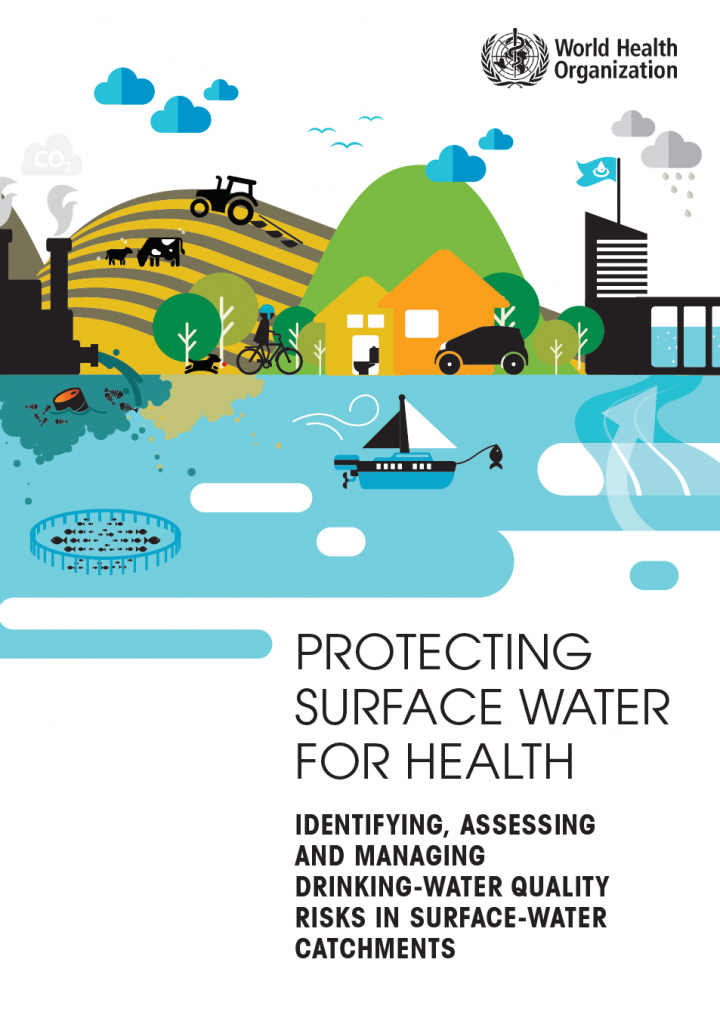Protecting Surface Water for Health Identifying, Assessing and Managing Drinking-Water Quality Risks in Surface-Water Catchments WHO (2016)
Safe drinking-water is essential to sustain life – it is the basis for human health, survival, growth and development. Therefore, access to safe drinking-water is a basic human right. Recognition of this right contributes to the survival of human beings and disease prevention, because water is used not only for drinking, but also for many other purposes such as hygiene, food production, agriculture, cooking and industry.
This book provides a structured approach to understanding surface waters and their catchments to support the identification, assessment and prioritization of the risks, and the development of management strategies for their control, as a basis for providing safe drinking-water. Where source water quality is maintained, less treatment effort is needed and the provision of safe drinking-water may be achieved with greater reliability. Thus, source-water protection is a key element in a multi-barrier approach to the provision of safe drinking-water. This is particularly true in resource limited settings where there is a lack of effective and reliable water treatment.
Bibliographic information
WHO (2016). Protecting Surface Water for Health Identifying, Assessing and Managing Drinking-Water Quality Risks in Surface-Water Catchments WHO
Filter / Tags
Camps (emergency or longer term)Peri-urbanRuralUrban informal settlements (slums)Politicians and local decision makersPractitionersEnglishWater (irrigation, process, other)

